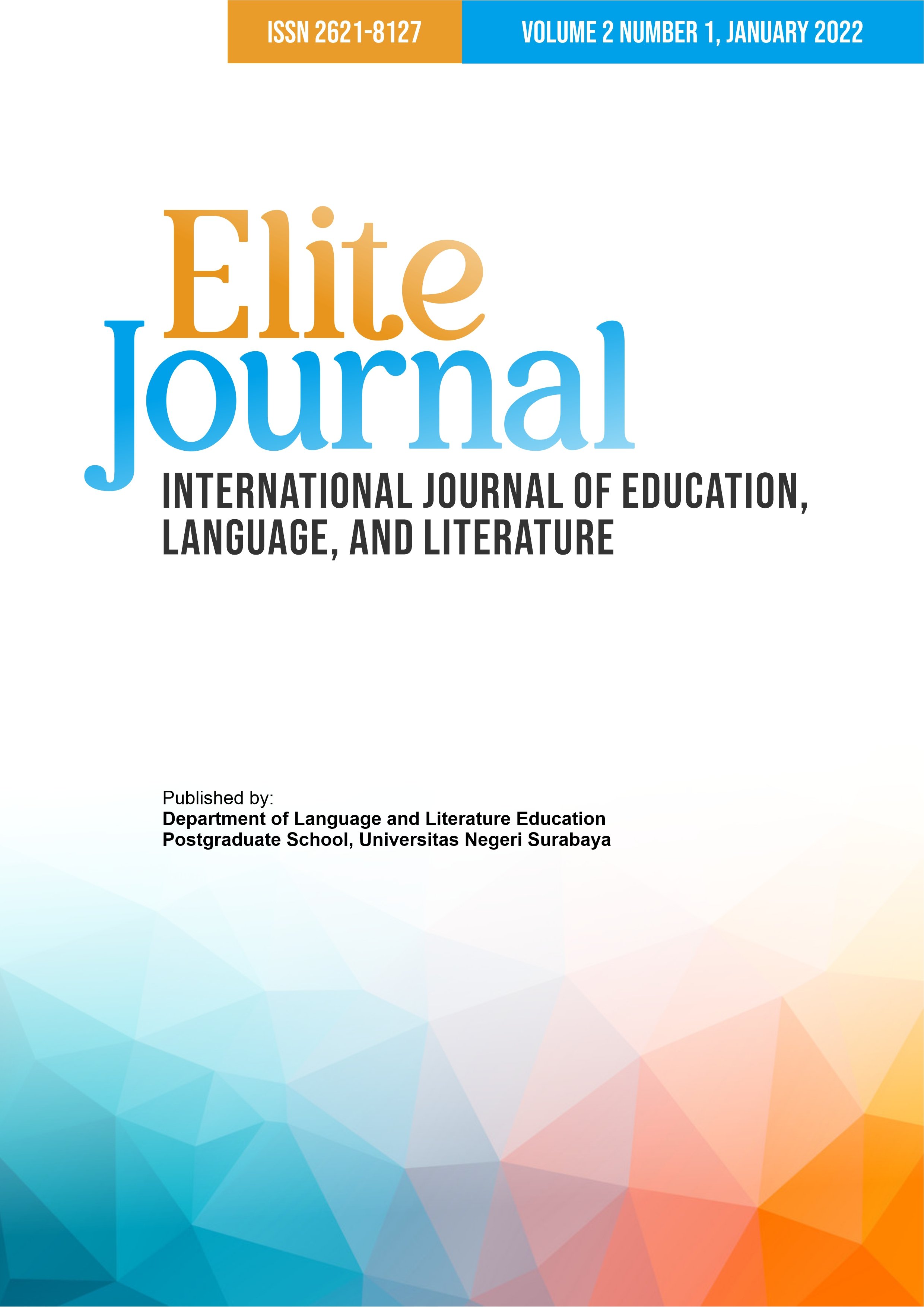THE IDEA OF HERO IN JAMES MCTEIGUS V FOR VENDETTA
DOI:
https://doi.org/10.26740/elitejournal.v2n1.p40-49Keywords:
hero, represent, V for VendettaAbstract
This study will focus on supporting the main character as a hero who fights against the government. Society is pressured by many things, even though it is all about vengeance from the main character’s point of view, yet Evey (a side character) is a genius hero. This study used a theory from the Hero’s Journey by Joseph Campbell and a social representative theory whose data is taken from character dialogue through a V for Vendetta film. This study portrayed significant focuses passed on the portrayal of Evey’s character who expects somebody who moves to express the hearts of individuals to know about the thing they encounter in their lives. The focus point sought by the writer is about the hero figure and James McTeigue’s idea to describe or represent. A hero’s idea rare in figure V, which incidentally does what makes him represented as a hero figure, is to avenge. The writer uses V for Vendetta, script, and movie by James McTeigue as the data source to be analyzed. In this study, the researcher will use qualitative research in the form of literary work. The research object is the idea of the hero, reflected in James McTeigue’s V for Vendetta.
References
Calder, T. (2003). The apparent banality of evil: The relationship between evil acts and evil character. Journal of Social Philosophy, 34(3), 364-376.
Carlyle, T. (2001). On heroes, hero-workship, and the heroic in history by Thomas Carlyle, the Pennsylvania State University. Electronic Classics Series, Jum Manis, Faculty Editor, Hazleton, PA, 18201-1291.
Frisk, K. (2019). What makes a hero? theorising the social structuring of heroism. Sociology, 53(1), 87-103.
Gehrmann, R. (2019). War, snipers, and rage from Enemy at the Gates to American Sniper. M/C Journal, 22(1).
Voytilla, S. (1999). Myth and the movies: Discovering the mythic structure of 50 unforgettable films (p. 47). Studio City, CA: Michael Wiese Productions.
Weber, M. (1978). Ethnic groups. In New tribalisms (pp. 17-30). Palgrave Macmillan, London.
Downloads
Published
How to Cite
Issue
Section
License
Copyright (c) 2021 Danar Pratanda Yudistira

This work is licensed under a Creative Commons Attribution 4.0 International License.
 Abstract views: 420
,
Abstract views: 420
, PDF Downloads: 1319
PDF Downloads: 1319





